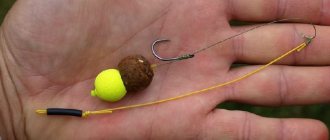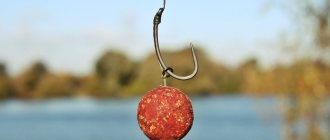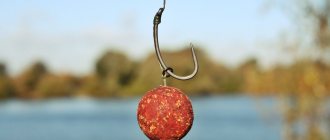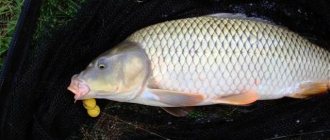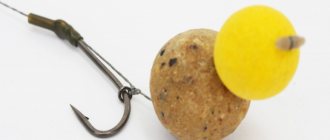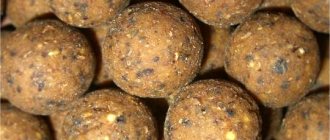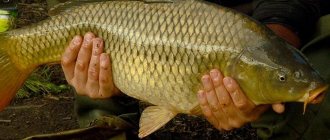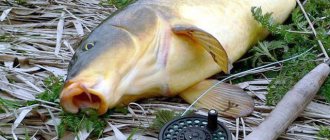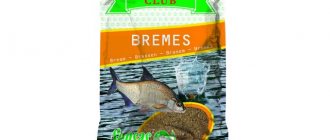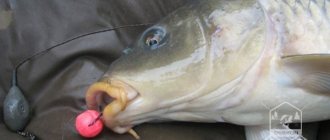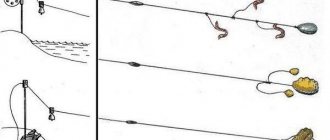Boilies at home
There is not a single fisherman who would not like to learn how to make boilies at home.
It is worth noting that the manufacturing technology is quite simple and does not require any professional skills, just follow the recommendations and instructions.
Making boilies yourself will allow you to make any soft or hard boilies for each specific body of water or fish, and make a boilie with any taste or aroma.
Basic ingredients for making boilies
The basis of any boilie consists mainly of ingredients that must guarantee nutritional value, structural integrity, as well as a varied taste and aroma, and, if necessary, a certain color.
But the so-called basis of any boilie consists of the following ingredients, which most importantly need to be dosed correctly:
- proteins,
- proteins;
- vitamins;
- mineral supplements;
- carbohydrates.
In addition, you must carefully enter:
- milk replacer;
- eggs or honey;
- flour.
To ensure that all the components do not fall apart, they must be bound with gluten. Also, a special flavor is introduced into any boilie to increase its effectiveness; taste and color stimulant.
All components that stimulate the taste characteristics of the boilie are made from the most attractive flour for fish:
- fish;
- meat;
- soy.
Some fishermen add bird food, which has also worked well.
Almost every fisherman, having set a specific goal, can create his own boilie recipe, which will include only natural and natural ingredients.
Equipment for making boilies
All ingredients that will be used must be measured with something; it is best to use measuring scales for this.
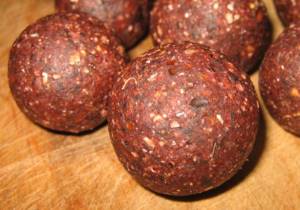
Also, to directly mix all the components you will need a glass container of a suitable size. And of course, a spoon or spatula for stirring.
If later, part of the boilie will be frozen, you should think about a storage container.
Thanks to this, you can use it for a long time.
After kneading the mass, you will definitely need a plastic bag, as well as a clock or timer, to more accurately measure time.
In the future, you will need a syringe with a special attachment, with which you can form the sausages from which boilies are made.
Instead of a syringe, you can use a special rolling table as a basis.
Cooked and almost finished boilies will need to be dried somewhere, the most optimal for this would be a mesh or a piece of fabric or a bag of perforated paper.
Storing finished bait.
It is not always possible to make bait immediately before fishing. In addition, it is very convenient to have a supply of ready-made bait at home. There are many ways to store bait - using chemicals, coating with a layer of oil, freezing, air drying, etc. But the best ways to store bait are freezing and air drying. Freezing, as the name suggests, involves using a freezer. Low temperature slows down the process of protein denaturation and allows you to keep the bait fresh for a long time. But when defrosting, all unwanted processes begin to occur at an increased speed. In addition, if stored for too long, the bait can also deteriorate (whitish spots appear on the boilies, collecting moisture). An alternative to freezing is air drying. The main enemy of boilies is moisture. By eliminating exposure to moisture, you can store finished boilies for a long time. To air-dry boilies, they must be laid out in a well-ventilated place for three to four days, or wrapped in a pillowcase and placed in a drum dryer for 20-60 minutes. Both methods allow you to store boilies for about a week. Store either in burlap (to prevent fogging). The room in which boilies will be stored must be dry and warm. Another storage method is vacuum packaging. Stores sell special devices for vacuum packaging products at home. Another effective way to preserve boilies is sun drying. The sun will remove all moisture, and the boilies will become hard, which is very good for reservoirs filled with trash fish. Place the boilies on a tray or on a towel so that they do not touch each other. Leave them in the sun for a whole day or more. Boilies must be turned regularly, otherwise soft areas may remain on them.
A universal recipe for making boilies
The boilie recipe most often includes many different options, and includes a variety of aromas, flavorings and components.
In order to determine which boilies will be the most effective, you can keep a journal of your own experiment and record the results. Thanks to this, you can ultimately choose the most balanced list of ingredients.
Universal boilies include several main options:
- a mass consisting of milk replacer (150g), corn flour (150g), sugar (50g) and semolina (350g);
- you need to mix bird food (200g), wheat flour (1kg) and milk powder (800g).
Each mass will need to be mixed very thoroughly and try to adhere to the proportions.
For each option, you will definitely need to add a binding element - an egg (exceptionally fresh!), in an approximate ratio of 10 eggs per 1 kg of mixture, you also need to add flavoring - 7-8 ml and dye 1 tsp. and 2 tbsp. vegetable oil.
After this, you need to mix everything well and roll into small balls, up to 3 cm in diameter. Next, you need to boil the formed balls for about 3 minutes and dry.
It is worth saying that there is no universal recipe; all ingredients are selected based on the conditions of a particular body of water and the preference of a particular fish.
The only ideal option is to experiment and experiment again.
DIY boilie recipes
Fishing using self-prepared boilies is becoming more and more relevant from year to year, due to the wide variety of possible results, as well as because of the good cost.
This will also allow you, over time, to choose your own unique recipe for boilies for fishing:
№ 1:
- cake - (200 gr.);
- grain flour - (150 g);
- corn flakes (100 g);
- semolina (150 gr);
- powdered milk (150 gr.).
№ 2:
- corn flour (400 gr.);
- soy flour (200 gr.);
- semolina (150 gr.);
- cake (100 gr.);
- protein (100 g);
- salt (50 gr.).
№ 3:
- bird food (100 gr.);
- milk powder (100 gr.);
- rice flour (100 gr.);
- wheat (100 gr.);
- corn (100 gr.).
For any of the recipes, you will need to beat the eggs and pour them into the mixture, this will serve as a binder for all the components. The entire mass should resemble dough to the touch and be just as plastic.
After this, you need to form balls from the resulting mass and boil them in boiling water for no more than 3 minutes. The indicator will be the fact that the balls begin to rise up. After that, the balls need to be placed on a towel, cloth or cloth and dried.
For any of the above recipes, you can use various flavors, for example:
- vanilla;
- honey;
- garlic;
- caramel;
- and much more.
Making boilies for carp with your own hands
For convenient preparation of boilies at home, a special rolling board is used. You can also use a regular rolling pin to roll out the “dough” of boilies.
The preparation of carp boilies can be divided into stages:
- The dry mixture is prepared according to an individual recipe.
- A flavor enhancer, flavoring, preservatives, and coloring are added. It should be remembered that all additives must be heat-resistant.
- The dough is kneaded. It should be viscous, cool, and not stick to your hands.
- The finished dough is wrapped in a plastic bag and left for at least one hour.
- The dough is rolled into “sausages” of the required diameter. Using a rolling board, balls of a certain size are made.
- The finished balls are dipped into boiling water (like dumplings). After the water boils again, cook for 5 minutes or until they float.
- The boilies are dried in a dark place.
Flavorings (attractants)
One of the types of flavorings.
Remember that there are no ideal attractants suitable for any reservoir and carp fishing conditions. Moreover, using the wrong scent can ruin your entire fishing trip. This also applies to baits that are heavily oversaturated with flavorings.
Types of flavors by method of use:
- Liquids are added during the cooking process.
- Dips (liquid, gel-like) - boilies are immersed in them, and can be processed in this way from several minutes to several months.
- Booster, vegetable oils - used for use in bait.
Main scents used:
- Fruit group (strawberry, plum, pineapple, banana);
- Honey;
- Vanilla;
- Caramel;
- Hemp;
- Corn;
- Shrimp aroma;
- Crab aroma;
- Shell aroma;
- Spices (Anise, coriander, fenugreek, sweet clove, cloves, ginger);
- Spices.
Spices can be classified as both flavoring agents and appetite stimulants. They contain vitamins, antioxidants, essential oils, and biologically active substances. The total proportion of spices should not exceed 3–5%. The most common spices: garlic, chili, paprika, cinnamon, asafoetida, turmeric, black pepper, salt.
Digestive stimulants
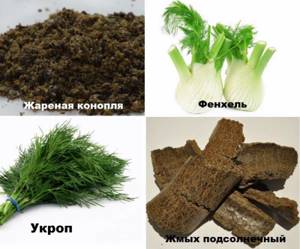
Digestive stimulants are added to help carp quickly absorb the food they consume. This, in turn, increases the carp's appetite. Properly selected digestive stimulants can reduce the amount of added attractants. They are added to a greater extent to bait boilies, and to a lesser extent to bait boilies.
Enzymes that improve digestion:
Chemical:
- Festal;
- Mezym Forte;
- Panzynorm Forte;
- Power Enzyme Complex.
Vegetable:
- Dill;
- Fennel;
- Sunflower cake;
- Hemp.
Dyes
To improve the efficiency of carp fishing, carp boilies are given various colors. For painting, food coloring or specialized paints are used, which can be bought in fishing stores. Some food colors may contain vitamins. These include paints based on carotenoids. They not only add color to the boilie, but are also a vitamin addition to the carp menu.
Boilie ingredients
Ingredients that are present in carp boilies:
Basic
- Cake, flour, breadcrumbs are the main ingredients for baits and boilies for carp Flour
(corn, pea, rice, etc.); - Fish products (dried and crushed fish, crustaceans, shellfish). They contain a lot of protein;
- Milk protein for boilies (basic component);
- Bird food (used as a base mixture);
- Blood processing products (basic component, plus attractant);
- Egg powder or eggs;
- Seaweed powder.
Additional
- Flavors;
- Dyes;
- Flavor enhancers;
- Essential oils;
- Preservatives.
Boilie sizes
The sizes of boilies can be divided into small (5-14 mm) and large (14-30 mm). Most types of white fish respond to small boilies.
This can create problems for targeted carp hunting. Therefore, in summer and early autumn it is preferable to use large boilies. During periods of low activity, small boilies are more preferable for carp. Several recipes for homemade carp boilies that you can make at home:
Recipe No. 1
Recipe based on 250 g of dry mixture (strawberries);
| Product | Weight, gr. | Product | Weight, gr. |
| Corn flour | 75 | Ground birdseed | 25 |
| Soy flour | 25 | Corn chaff | 18 |
| Pea flour | 16 | Betaine (dry)/(liquid) | (2,5)/(3) |
| Wheat flour | 25 | Casein | 3 |
| Semolina | 50 | Salt/Sugar | 8/25 |
| Powdered milk | 25 | Flavor | 0.5 ml |
| Ground hemp grains | 8 | Red dye | 0,5 |
| Ground tiger nut | 5 | Chicken eggs | 2-3 pcs. |
To 250 g of the base bulk mixture, add betaine and casein (flavor enhancers), natural preservatives or salt (table or sea), sugar, dye, beat in eggs, add flavoring. Mix the dough. Let's settle. Cook for 5 minutes. The boilies are ready.
Recipe No. 2
Based on 200 gr. ready-made boilies (corn).
- Break one egg into a bowl, then add:
- Salt 5 gr.
- Colorless gelatin.
- A tablespoon of honey.
- Yellow dye.
- Add and mix corn flour (preferably coarsely ground) until it becomes a thick porridge.
- Add and mix in regular flour (about 20% of the amount of corn flour).
- Stir until it forms a stiff dough, wrap it in a bag and leave for 20–30 minutes. stand up.
- Press the dough (do not roll it out) in your hands to an approximate size, after you have formed a sausage, roll it out to the desired diameter
- Making balls.
- Steam in a steamer for 5 minutes or cook like dumplings - when they float, take them out immediately. Dry for 2-5 days out of direct sunlight.
The boilies are ready.
Recipe No. 3
| Product | Weight, gr. | Name | Weight, gr. |
| Flour (corn) | 400 | Protein | 100 |
| Soy flour | 200 | Salt | 50 |
| Semolina | 150 | vanillin | 8 |
| Roasted sunflower seeds (chalked) | 50 | cinnamon | 2 |
| Hemp seeds (chalked) | 50 | eggs | 4-5 pcs. |
| Olive (hemp) oil | Tablespoon |
Making a dry mixture.
- Break the eggs into a blender, add oil, and pour in the prepared dry mixture.
- Beat.
- Roll out the balls.
- Cook.
- Dry.
Recipe No. 4
Quite an interesting and simple way to make boilies from bread.
- Cut two even pieces of bread about 1-1.5 cm thick. Trim hard edges.
- Roll out individually to a thickness of 2-5 mm. Trim the edges.
- Grease one sheet with jam (jam, honey, syrup), sprinkle with dry milk.
- Place another sheet of bread on top of the processed one.
- Using a rolling pin, lightly press one sheet to another (roll out)
- Trim the edges.
Carp boilies are ready.
Now you can prepare a bait for carp in two ways:
- Cut the resulting blank sheet into narrow strips. Then cut each strip into squares.
- Take a syringe of the required diameter. Cut off the part together with the mouth (from the needle side). Now we just press through the bread blanks. Using a piston, squeeze out the resulting nozzle.
Watch a video about the behavior of carp underwater when fishing with boilies:
Boilie recipes for catching carp in spring and autumn
Constant experiments with your own boilies will help you create your own recipe, which will be ideally suited to a certain water temperature, time of year and certain properties of a particular body of water.
For example, in cool water, fish such as carp prefer boilies with a high protein content.
Boyle for spring:
- Grain flour 250 g;
- Fish meal 300 g;
- Bran 65 g;
- Squid flour 60 g;
- Wheat germ 50g;
- Gammarus 50 g;
- Powdered milk 50 g;
- Salt 30 g;
- Betaine 15 g.
Boyle for autumn:
- Wheat flour 200 g;
- Fish meal 350 g;
- Bran 75 g;
- Wheat grains 30 g;
- Food for farm animals 50 g;
- Powdered milk 55 g;
- Salt 30 g;
- Betaine 15 g.
Universal boilie recipes
Such baits at any time of the year when carp are caught. Recipes for the most catchy boilies will be given below.
1 recipe
To prepare boilies you will need:
- Soy flour – 1 cup.
- Corn flour - 1 cup.
- Powdered milk – 1 glass.
- Semolina – 2 cups.
- Sunflower seeds - 0.5 cups.
- Hemp seeds - 0.5 cups.
- 10 chicken eggs.
- 50 ml sunflower oil.
Sunflower seeds are ground in a blender or meat grinder, after which they are mixed with semolina and flour. The eggs are removed from their shells and mixed with sunflower oil, then thoroughly beaten in a blender or whisk.
The beaten eggs are added to the main mixture and mixed until a homogeneous mass is formed. Balls are made from the resulting dough, which are then boiled for 2 minutes.
2 recipe
- 300 g of potatoes with a high starch content are grated.
- Add 5 eggs to potatoes.
- 1 cup of wheat flour and 1 cup of semolina and 0.5 cup of hemp cake are added to the mixture.
- The mixture is thoroughly mixed until a homogeneous mass is obtained, from which balls are then formed and boiled for 2 minutes.
3 recipe
- 1 cup corn flour.
- 1 cup semolina.
- 50 g salt.
- Makukha 50 g.
- Hemp seeds 50 g.
- 1 g vanillin.
- 5 chicken eggs.
All ingredients are thoroughly mixed , then boilies are made from the dough.
Boilies for crucian carp
Among the various inhabitants of reservoirs, we can say with complete confidence that crucian carp is a true gourmet who is able to appreciate the beauty of aromatic and flavor additives in boilies.
Also, you need to know that it is the filling (that very kernel inside) that will force the crucian carp to eat the boilie to the very end and will, in fact, significantly increase fishing success.
In addition, only added water-soluble elements can increase the effectiveness of the bait.
It is best to add more fat and glucose to the mixture.
Boilie preparation technology
There are some great tips for making boilies for fishing in the colder months, for example, it is worth using a flavoring that is based on ethyl alcohol, this way you can be sure that the bait you make will attract fish even in cold water.
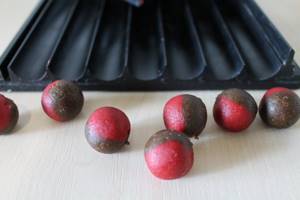
Some experienced fishermen add fat (a couple of spoons) in order to create the most attractive bait for fish.
Thanks to tinting technology, you can create a bright bait that no fish will surely miss.
The most effective are combined boilies, which consist of approximately 55% sinking bait and 45% floating bait.
You should always experiment and try to create with each step the most attractive form of boilie for fish in each specific body of water.
Speaking of experiments, you shouldn’t stop at those flavor and smell additives that are presented in a standard set in stores; you can try adding, for example, chili pepper or hot sauce, and maybe even mint.
Secret ingredients of boilies
The whole secret of the components and ingredients of various boilie baits is just an experiment and imagination.
But some professional fishermen advise using a microwave rather than a pan of boiling water to make floating boilies, this way the bait will be light and airy and will increase the buoyancy of the balls.
For muddy water in a pond, it is best to use light-colored boilies, which the fish will definitely notice in the water; in some specific cases, hair baits are well suited; they are characterized by the fact that the hook itself is located behind the bait and the fish does not notice it until it is caught.
Ready boilies. Is the purchase justified? Are there any alternatives?
This is the question that makes you think. People cannot be sure that, having paid about 4 thousand rubles, they will receive an original British nozzle, which is why opinions are divided. Some carp anglers are ready to order bait from sites such as Amazon and wait weeks for their arrival. Another is to prepare your own boilies by reading simple recipes on the Internet. However, there are those who will go to the nearest fishing store and find a quality alternative there.
Read: Pea dough for catching bream
This begs the question: is it possible to find the same ingredients and use your skills to prepare exactly the same boilies? Many experienced fishermen say that there is no point in spending a lot of time searching for target components in an attempt to copy expensive boilies. Provided that not all of the specified components are on the market of the CIS countries. If the fisherman fundamentally wants this, he can try. However, such a manufacturing process can drag on for months, which is quite unjustified. In most cases, the best option will be to produce less complex attachments rather than chasing rarer components. It is also possible to replace the target components with analogues in composition or origin. The final result will differ from the target. If you prepare for such an outing in advance, you have the opportunity to order either the number of components per serving or a packaged product. The only difference will be in delivery times. However, it is also worth considering the factor of loss of original properties due to improper transportation.
If you are not critical of the selection of ingredients and the type of bait you prepare, you should take simple recipes and feel free to go cook. The time and money spent on searching for ingredients and preparation will also be reduced, which will allow you to be ready to go to the reservoir at any time.
Don't be afraid to experiment. It is possible to cook what suits you.
Popular bases for boilies
Among all the existing foundations, the most relevant today are three:
- Dairy;
- Fish;
- Vegetable.
Bases for boilies created on the basis of casein are universal and multifunctional, as they are used for any time of the year.
For example, the following mixture for making boilies is very effective:
- powdered milk – 1 glass;
- soy flour – 1 cup;
- semolina – 2 cups;
- eggs – 10 pieces;
- oil – 2 tbsp. spoons;
- vanilla;
- betadine – 15g.
It is the bait rich in carbohydrates, original ingredients and additives that fish prefer in the hot summer.
Boilies for carp fishing. Shelf-life vs. Scooters
Beginning carp fishermen often wonder whether they should start making boilies themselves, or whether they shouldn’t fool themselves. We have already written several articles on the topic of how to create your own basic mix, and also shared useful tips and life hacks for producing boilies. But if you still compare purchased, branded boilies, or scooters, is everything so clear?
To begin with, let us repeat once again that boilies today have practically taken the leading position when it comes to catching big fish. Even those anglers who have never tried hair-mounting still know about the existence of boilies in one way or another.
With the development of industry, not only final products in the form of flavors and ready-made packaging poured onto store shelves. Manufacturers encourage fishermen by providing them with all the necessary components for making their own boilies. There are even entire video tutorials on how to roll your first lures.

So, today there are only three categories of boilies:
Shelf-life - those sold in stores. These boilies contain a preservative component that keeps them fresh.
Freezer - those that are not sold in our stores
